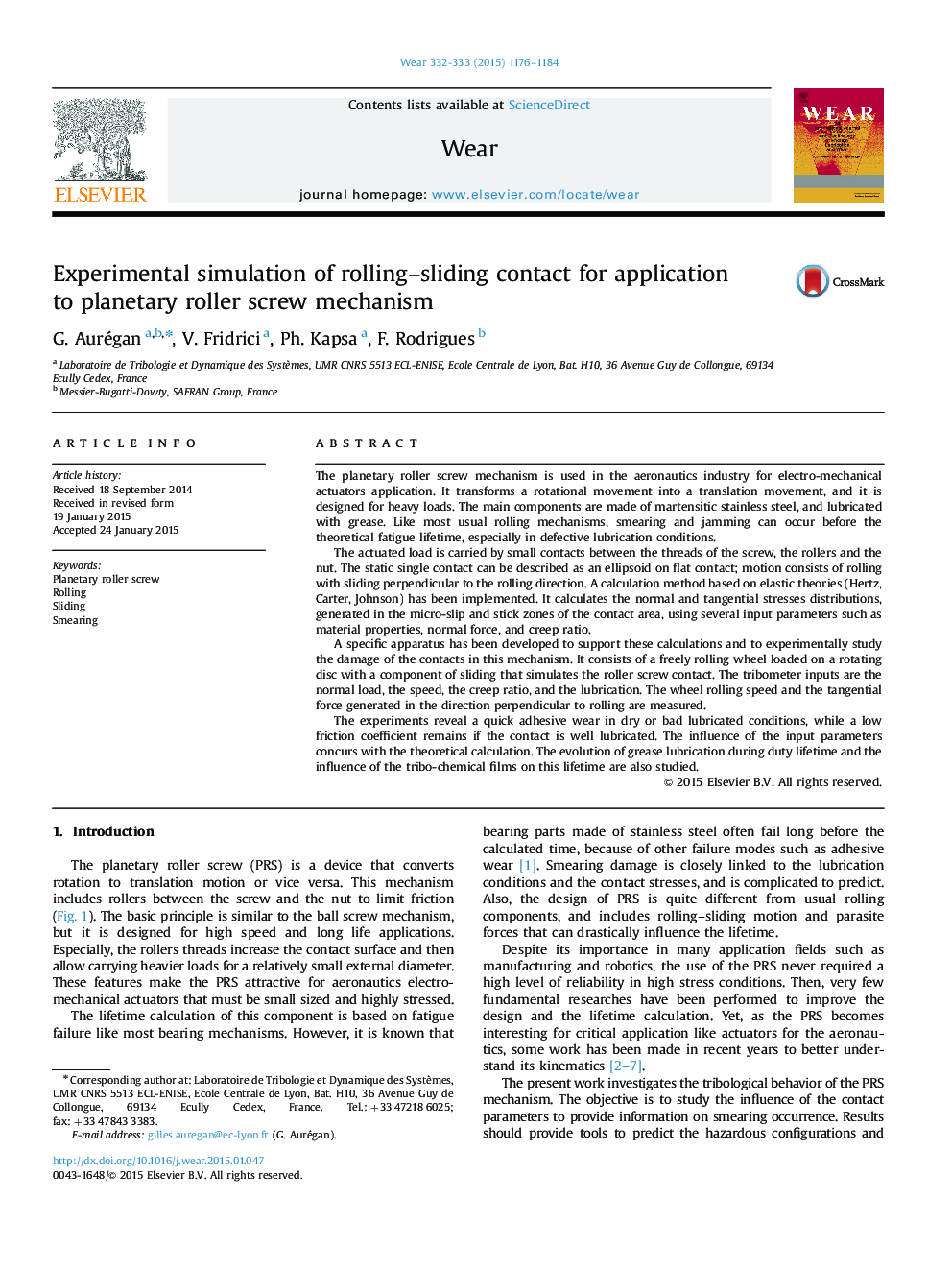| Article ID | Journal | Published Year | Pages | File Type |
|---|---|---|---|---|
| 617129 | Wear | 2015 | 9 Pages |
•A method for calculating the PRS contact characteristics is provided.•A specific apparatus is developed to simulate the rolling–sliding contact.•In dry condition, smearing occurs quickly even with low contact stress.•Lifetime of the grease lubricated contact mostly depends on the creep ratio.•The tribological obtained results can be used for optimizing the design of the PRS.
The planetary roller screw mechanism is used in the aeronautics industry for electro-mechanical actuators application. It transforms a rotational movement into a translation movement, and it is designed for heavy loads. The main components are made of martensitic stainless steel, and lubricated with grease. Like most usual rolling mechanisms, smearing and jamming can occur before the theoretical fatigue lifetime, especially in defective lubrication conditions.The actuated load is carried by small contacts between the threads of the screw, the rollers and the nut. The static single contact can be described as an ellipsoid on flat contact; motion consists of rolling with sliding perpendicular to the rolling direction. A calculation method based on elastic theories (Hertz, Carter, Johnson) has been implemented. It calculates the normal and tangential stresses distributions, generated in the micro-slip and stick zones of the contact area, using several input parameters such as material properties, normal force, and creep ratio.A specific apparatus has been developed to support these calculations and to experimentally study the damage of the contacts in this mechanism. It consists of a freely rolling wheel loaded on a rotating disc with a component of sliding that simulates the roller screw contact. The tribometer inputs are the normal load, the speed, the creep ratio, and the lubrication. The wheel rolling speed and the tangential force generated in the direction perpendicular to rolling are measured.The experiments reveal a quick adhesive wear in dry or bad lubricated conditions, while a low friction coefficient remains if the contact is well lubricated. The influence of the input parameters concurs with the theoretical calculation. The evolution of grease lubrication during duty lifetime and the influence of the tribo-chemical films on this lifetime are also studied.
